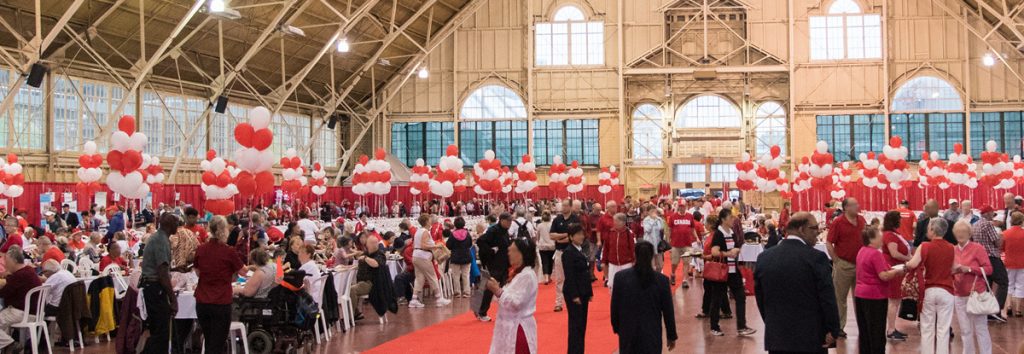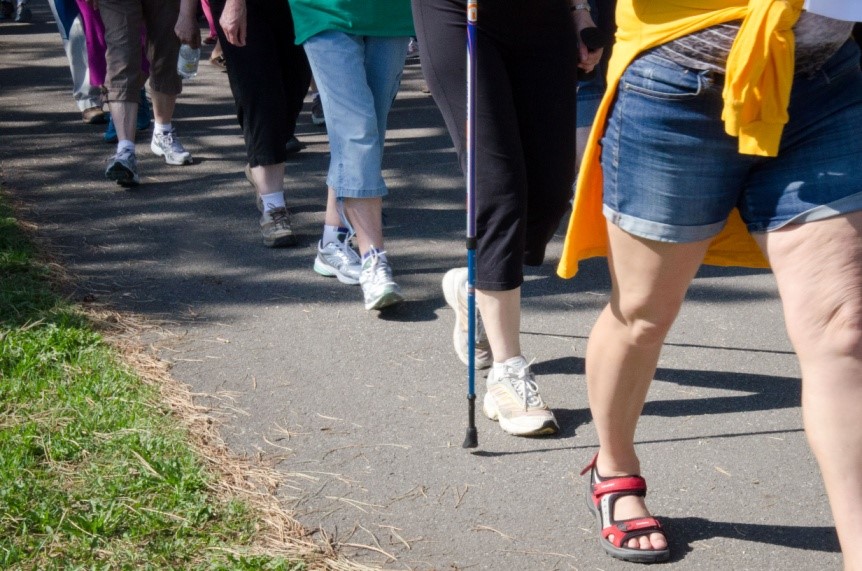Case Study: The Age-friendly Programme in Ottawa
The City of Ottawa adopted its first Older Adult Plan in 2012, a year after joining the WHO Global Network for Age-friendly Cities and Communities. The two-year plan was developed following an extensive consultation conducted with approximately 630 older residents and stakeholders and led to the formulation of 74 action points covering the eight domains of the WHO age-friendly framework. The City of Ottawa reaffirmed its commitment to increasing the age-friendliness of the city in 2015 by adopting a second action plan, this time covering four years and identifying 51 actions to increase the age-friendliness of the city (1).The City is currently moving towards the development of its third action plan (2019-2022) and from April to June 2018 engaged with 1,700 older people through an online survey and 11 focus groups hosted in collaboration with community partners to help shape the next plan. The Older Adult Plan is a priority of the City of Ottawa Strategic Plan and was allocated a Can$500,000 annual budget to support its realisation. This additional funding is for initiatives that are not part of regular City operations.
Consultations have consistently identified transportation, mobility, housing (including affordable housing and supports to age in place), and information about accessing services as the priorities for older adults in Ottawa. Since the inception of its first Older Adult Plan, Ottawa’s City Council has sought to address these issues by working in close collaboration with the Council on Aging of Ottawa, a charitable organisation dedicated to improving the quality of life of Ottawa’s older residents (2)). The City Council has also worked closely with Age-Friendly Ottawa, a community initiative led by the Council on Aging of Ottawa, and its steering committee, which is comprised of various actors including City representatives, community partners, university representatives and older people (3). The City of Ottawa’s Older Adult Plan and Age-Friendly Ottawa are two complementary initiatives and both aim to increase the age-friendliness of the city. The former focuses on “the City’s areas of municipal responsibility”, while the latter “targets the entire community” (4, p4). Ottawa’s municipal and community actions plans were developed collaboratively through a network of community partners with a common vision of an age-friendly city.
Challenges and Strategies for Progress
© Ottawa, Canada - Mayor's Canada Day 2018: A Celebration for Seniors
As Canada’s capital city, Ottawa was home to 934,243 residents in 2016 (5). People aged 65 and over accounted 15.4% of the city’s population that year (5) and this is expected to rise to 22% by 2031 (6).
Ottawa is a geographically very disperse city so there is a need for age-friendly policies across urban, suburban area and rural areas. Infrastructure,development, access to health and social services, and affordable transportation options can be a particular challenge in rural communities.While a majority of older people currently live in urban or suburban areas, they represented 12.3% of the population living in rural areas in 2011 and it is expected that the size of this group will grow by an estimated 183% between 2011 and 2031 (7).
Ottawa’s age-friendly policies also need to pay attention to the different sub-groups of older people. For example, Ottawa is an ethnically mixed city. Almost 35% of Ottawa’s older population were born in another country (3) and 14% of Ottawa’s older residents identified as a visible minority in 2016 (8). Ottawa’s residents also have different language backgrounds: in 2016, 61% of Ottawa’s population identified their mother tongue as English and 14% as French (5). Recognising and meeting the needs of the diverse backgrounds of Ottawa’s older population is seen as essential to make the city age-friendlier. However, this can be a challenging task to achieve within budget and with existing resources.
Ottawa’s age-friendly programme targets the whole ageing population. Older people have been invited to share their views throughout the development of the programme, including consultation sessions with diverse older people including ethnocultural, indigenous and Lesbian, Gay, Bisexual, Trans, Queer/Questioning (LGBTQ) groups, as well as older people living with a low-income, experiencing isolation, living in a rural area or speaking French.
Age-friendly City Projects – Examples of Success
The City of Ottawa has addressed a variety of age-friendly themes. A review of the key accomplishments made through the Older Adult Plan from 2015 to 2017shows that the City has during this period achieved a number of improvements across different sectors (9).
For example, the City has improved the quality and accessibility of outdoor spaces and city buildings by installing 39 accessible benches, reprofiling 2,637 pavement curbs to eliminate tripping hazards, upgrading the accessibility of 13 city facilities, and rating 32 city facilities using a new Accessibility Rating Tool.
© Ottawa, Canada - Mobility: a top priority for older adults in Ottawa
To improve transportation and mobility, the city adjusted the crossing times at 53 busy intersections, improved 130 on-street bus stops to make them more accessible, installed 152 accessible benches at 22 Transitway stations, and modified 48 intersections with pedestrian signals and countdown timers.
In order to make the city more age-friendly, Ottawa has also developed projects to improve the community support and health services. For example, between 2015 and 2017 the city offered 1,365 free dental screenings to older residents on a low-income, distributed over 3,000 Older Adult Emergency Preparedness kits in 6 languages, and provided low-income older people with 450 smart burners, 1,525 carbon monoxide alarms and 229 smoke alarms. In the area of housing, the city developed 131 new units of affordable older people’s housing and approved 104 older people for the Ontario Renovates Programme.
Social inclusion, recreation and cultural participation are also areas that have received attention. For example, the Techno Buddies programme matches older adults to teen volunteers for one-on-one assistance to help them increase their technology skills and use social media. Older adult appropriate fitness equipment has been provided at 17 locations, 200 participants have attended Falls Prevention workshops, and thousands of older adults have participated in recreational and art activities and workshops.
There are also various examples of reporting mechanisms and accountability structures. The City of Ottawa developed a Seniors Roundtable, whichmeets four times a year to provide feedback on the realisation and development of the Older Adult Plan. This group of up to 15 older residents is the City’s primary mechanism for ongoing engagement and consultation with older residents on corporate and departmental programmes, services and infrastructure. It acts both as an accountability structure, by inviting older people to share their views on the development of the programme, and as a communication platform by inviting this group to identify and share emerging issues of concern to older adults (1). Each City department is also asked to submit quarterly reports throughout the development of the programme to review implementation progress. These quarterly reports are combined in a single document and presented to the Seniors Roundtable for review and feedback.
Future of Ottawa’s Age-friendly Programme
Ottawa is currently working on the development of an Age-Friendly Evaluation Framework to demonstrate its impact and sees this project as one of the key aspects of the programme (10). Working in close collaboration with the Council on Ageing of Ottawa, the City has contributed to the development of the evaluation framework and the collection and analysis of baseline data for 66 indicators covering medium and longer-term outcomes and impacts across the eight areas of an age-friendly community.
Development of the third Older Adult Plan (2019-2022) is currently under way and the City plans to have identified its priorities by 2019.
Acknowledgments: This case study was written in partnership with a team from the University of Manchester led by Tine Buffel and consisting of Tine Buffel, Natalie Cotterell, Chris Phillipson, and Samuèle Rémillard-Boilard; in collaboration with Cinthia Pagé, Clara Freire and Bonnie Schroeder of Ottawa.
References
(1) Older Adult Plan 2015-2018. Ottawa: City of Ottawa; 2015.
(2) Who we are. In: The Council on Aging of Ottawa [website]. Ottawa: CAO; 2018 (https://coaottawa.ca/who-we-are/, accessed 1 August 2018).
(3) How age-friendly is Ottawa? An Evaluation Framework to Measure the Age-Friendliness of Ottawa. Ottawa : The Council on Aging of Ottawa; 2017.
(4) Older Adult Plan 2012-2014. Ottawa: City of Ottawa; 2012.
(5) Census Profile, 2016 Census. Ottawa, Census division[Census division], Ontario and Ontario [Province]. Ottawa: Statistics Canada; 2017 (https://www12.statcan.gc.ca/census-recensement/2016/dp-pd/prof/details/..., accessed 17 November 2018).
(6) A Portrait of Ottawa Older Adults: Demographic and Socio-Economic Characteristics. Ottawa: City of Ottawa; 2011.
(7) A Profile of Vulnerable Seniors in the Ottawa Region. Ottawa: United Way; 2017.
(8) 2018 Provincial Election. Seniors and Persons with Disabilities Priorities Guide. Ottawa: The Council on Aging of Ottawa; 2018.
(9) Older Adult Plan. Accomplishments 2015 to 2017. Ottawa: City of Ottawa; 2017.
(10) Cinthia Pagé, City of Ottawa, personnal communication, July 2018.



